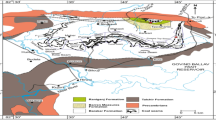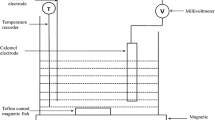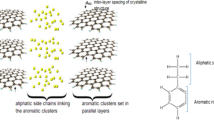Abstract
A nation's ability to use its energy resources efficiently and the expansion of its industrial sector are key factors in its prosperity. Most of the industrially developed nations in the world use coal as their main energy source. These resources have been utilized mainly for industrial growth, such as thermal power plants, steel industries, and other associated industries for the industrial revolution. For the exploitation and utilization of these resources, heating value is a significant concern. This can be determined directly or using models framed using readily available variables. Various mathematical models have been developed for estimating coal heating value quickly and precisely. The current review compiles the most recent and well-known models for estimating coal's heating value. Different models have relied upon elemental analysis, proximate analysis, proximate and ultimate analysis, spectroscopy, and other analyses to determine target variables. This compilation shall help the user to identify and apply best suited method, based on concerned organization’s economic condition and accessibility to methodology.






Similar content being viewed by others
Data availability
The raw data used in this work can be obtained from the corresponding author upon reasonable request.
References
BP. Statistical Review of world energy globally consistent data on world energy markets. [Internet]. 2020. Available from: https://www.bp.com/content/dam/bp/business-sites/en/global/corporate/pdfs/energy-economics/statistical-review/bp-stats-review-2020-full-report.pdf
Vargas-Moreno JM, Callejón-Ferre AJ, Pérez-Alonso J, Velázquez-Martí B. A review of the mathematical models for predicting the heating value of biomass materials. Renew Sustain Energy Rev [Internet]. 2012;16:3065–83. https://doi.org/10.1016/j.rser.2012.02.054.
Yin C-Y. Prediction of higher heating values of biomass from proximate and ultimate analyses. Fuel [Internet]. 2011;90:1128–32. Available from: https://www.sciencedirect.com/science/article/abs/pii/S0016236110006460
Patel SU, Jeevan Kumar B, Badhe YP, Sharma BK, Saha S, Biswas S, et al. Estimation of gross calorific value of coals using artificial neural networks. Fuel [Internet]. Elsevier Ltd; 2007 [cited 2021 Mar 8];86:334–44. Available from: https://linkinghub.elsevier.com/retrieve/pii/S0016236106002961
Demirbas A. Theoretical heating values and impacts of pure compounds and fuels. Energy Sources, Part A Recover Util Environ Eff [Internet]. 2006;28:459–67. Available from: http://www.tandfonline.com/doi/abs/https://doi.org/10.1080/009083190927129
Tan P, Zhang C, Xia J, Fang Q-Y, Chen G. Estimation of higher heating value of coal based on proximate analysis using support vector regression. Fuel Process Technol [Internet]. 2015;138:298–304. https://doi.org/10.1016/j.fuproc.2015.06.013.
ASTM D3172–89. D3172–73 (Reapproved 1984), Standard method of proximate analysis of coal and coke. Gaseous fuels; coal coke Sect. 2002;5:5.
ASTM D3176–84 [Internet]. 1990. Available from: https://www.osti.gov/biblio/569575
ASTM D5865–10. Standard test method for gross calorific value of coal and coke. ASTM Int. West Conshohocken, PA; 2010.
Lowry HH. Chemistry of coal utilization: supplementary volume. New York: John Wiley and Sons Inc; 1963.
WA Selvig IG. Chemistry of coal utilisation. Vol.1. H H Lowery, editor. New york: Wiley Online Library; 1945.
Strache H LR. Kohlenchemie.Leipzig: akademische Verlagssesellschaft. 1924;476.
Steuer W. General formulas for calculating the heating value of fossil fuels from their elementary analyses. Brennst Chem. 1926;7:344–7.
R Vondracek. Brennstoff-Chem. 1927;22–3.
Schuster F. Calculation of the heating value of solid fuels. Glueckauf. 1931;67:232–5.
Grummel ES, Davis I. A new method of calculating the calorific value of a fuel from its ultimate analysis. Fuel. 1933;12:199.
Seyler CA. Petrology and the classification of coal. South Wales Institute of Engineers; 1937.
Sumegi L. A formula for calculation of the calorific value of coal from chemical analysis. Magy Mernok-es Epit Kozlonye. 1939;73:345–6.
Mott RA, Spooner CE. The calorific value of carbon in coal: the Dulong relationship. Fuel. 1940;19(10–19):242–51.
Boie W. Fuel technology calculations. Energietechnik. 1953;3:309–16.
Graboski M, Bain R. Properties of biomass relevant to gasification in Biomass gasification--principles and technology, ed. by Reed TB. Noyes Data Corp New Jersey. 1981;41–69.
Alwalkar AT. Coal conversion systems technical data book. Department of Energy, Office of Energy Technology, Division of Coal Conversion; 1978.
Himus GW. The elements of fuel technology. L. Hill; 1958.
Krevelen DW, Schuyer J. Coal science: aspects of coal constitution. Elsevier publishing company; 1957.
Mason DM, Gandhi KN. Formulas for calculating the calorific value of coal and coal chars: Development, tests, and uses. Fuel Process Technol [Internet]. 1983;7:11–22. Available from: https://linkinghub.elsevier.com/retrieve/pii/037838208390022X
Singh KP, Kakati MC. New models for prediction of specific energy of coal. Fuel [Internet]. 1994;73:301–3. Available from: https://linkinghub.elsevier.com/retrieve/pii/0016236194901295
D’Huart K. The development of formulas for determining the heating value of solid fuels. Die Warme. 1930;53:313–7.
Goutal M. Industrial chemistry—on the calorific power of oil. Cr Hebd Acad Sci. 1902;135:477–9.
Schuster VF. Uber die Berechnung des Heizwertes von Kohlen der Immediatzusammensetzung. Brennst Chem. 1951;32:19–20.
Küçükbayrak S, Dürüs B, Meríçboyu AE, Kadiog̈lu E. Estimation of calorific values of Turkish lignites. Fuel [Internet]. 1991;70:979–81. Available from: https://linkinghub.elsevier.com/retrieve/pii/001623619190054E
Cordero T, Marquez F, Rodriguez-Mirasol J, Rodriguez J. Predicting heating values of lignocellulosics and carbonaceous materials from proximate analysis. Fuel [Internet]. 2001 [cited 2021 Mar 8];80:1567–71. Available from: https://linkinghub.elsevier.com/retrieve/pii/S0016236101000345
Jiménez L, González F. Study of the physical and chemical properties of lignocellulosic residues with a view to the production of fuels. Fuel [Internet]. 1991;70:947–50. Available from: https://linkinghub.elsevier.com/retrieve/pii/001623619190049G
Parikh J, Channiwala SA, Ghosal GK. A correlation for calculating HHV from proximate analysis of solid fuels. Fuel [Internet]. 2005;84:487–94. Available from: https://linkinghub.elsevier.com/retrieve/pii/S0016236104003072
Majumder AK, Jain R, Banerjee P, Barnwal JP. Development of a new proximate analysis based correlation to predict calorific value of coal. Fuel [Internet]. 2008;87:3077–81. Available from: https://linkinghub.elsevier.com/retrieve/pii/S0016236108001488
Erik NY, Yilmaz I. On the use of conventional and soft computing models for prediction of gross calorific value (GCV) of coal. Int J Coal Prep Util [Internet]. 2011;31:32–59. Available from: http://www.tandfonline.com/doi/abs/https://doi.org/10.1080/19392699.2010.534683
Akkaya AV. Predicting coal heating values using proximate analysis via a neural network approach. Energy Sources, Part A Recover Util Environ Eff [Internet]. 2013;35:253–60. Available from: http://www.tandfonline.com/doi/abs/https://doi.org/10.1080/15567036.2010.509090
Ghosh S, Chatterjee R, Shanker P. Prediction of coal proximate parameters and useful heat value of coal from well logs of the Bishrampur coalfield, India, using regression and artificial neural network modeling. Energy Fuels. 2016;30:7055–64.
Feng Q, Zhang J, Zhang X, Wen S. Proximate analysis based prediction of gross calorific value of coals: A comparison of support vector machine, alternating conditional expectation and artificial neural network. Fuel Process Technol [Internet]. 2015;129:120–9. https://doi.org/10.1016/j.fuproc.2014.09.001.
Qi M, Luo H, Wei P, Fu Z. Estimation of low calorific value of blended coals based on support vector regression and sensitivity analysis in coal-fired power plants. Fuel [Internet]. 2019;236:1400–7. https://doi.org/10.1016/j.fuel.2018.09.117.
Acikkar M, Sivrikaya O. Prediction of gross calorific value of coal based on proximate analysis using multiple linear regression and artificial neural networks. TURKISH J Electr Eng Comput Sci [Internet]. 2018;26:2541–52. Available from: http://online.journals.tubitak.gov.tr/openDoiPdf.htm?mKodu=elk-1802-50
Akhtar J, Sheikh N, Munir S. Linear regression-based correlations for estimation of high heating values of Pakistani lignite coals. Energy Sources, Part A Recover Util Environ Eff [Internet]. Taylor & Francis; 2017;39:1063–70. Available from: https://www.tandfonline.com/doi/full/https://doi.org/10.1080/15567036.2017.1289283
Mesroghli S, Jorjani E, Chehreh Chelgani S. Estimation of gross calorific value based on coal analysis using regression and artificial neural networks. Int J Coal Geol [Internet]. 2009;79:49–54. https://doi.org/10.1016/j.coal.2009.04.002.
Kavšek D, Bednárová A, Biro M, Kranvogl R, Vončina D, Beinrohr E. Characterization of Slovenian coal and estimation of coal heating value based on proximate analysis using regression and artificial neural networks. Open Chem [Internet]. 2013;11:1481–91. Available from: https://www.degruyter.com/view/journals/chem/11/9/article-p1481.xml
Akkaya AV. Coal higher heating value prediction using constituents of proximate analysis: Gaussian process regression model. Int J Coal Prep Util [Internet]. Taylor & Francis; 2020;00:1–16. https://doi.org/10.1080/19392699.2020.1786374
Spooner CE. Swelling power of coal. Fuel. 1951;30:193–202.
Mazumdar BK. Coal systematics: deductions from proximate analysis of coal part I. J Sci Ind Res B. 1954;13:857–63.
Ghugare SB, Tambe SS. Genetic programming based high performing correlations for prediction of higher heating value of coals of different ranks and from diverse geographies. J Energy Inst [Internet]. 2017;90:476–84. https://doi.org/10.1016/j.joei.2016.03.002.
Go AW, Conag AT. A unified semi-empirical model for estimating the higher heating value of coals based on proximate analysis. Combust Sci Technol [Internet]. 2018;190:2203–23.
Kumari P, Singh AK, Wood DA, Hazra B. Predictions of gross calorific value of Indian coals from their moisture and ash content. J Geol Soc India [Internet]. 2019;93:437–42. Available from: http://link.springer.com/https://doi.org/10.1007/s12594-019-1198-5
Neavel RC, Smith SE, Hippo EJ, Miller RN. Interrelationships between coal compositional parameters. Fuel [Internet]. 1986;65:312–20. Available from: https://linkinghub.elsevier.com/retrieve/pii/0016236186902899
Mazumdar B. Theoretical oxygen requirement for coal combustion: relationship with its calorific value. Fuel [Internet]. Elsevier Science Ltd; 2000 [cited 2021 Jan 10];79:1413–9. Available from: https://linkinghub.elsevier.com/retrieve/pii/S0016236199002720
Channiwala SA, Parikh PP. A unified correlation for estimating HHV of solid, liquid and gaseous fuels. Fuel [Internet]. Elsevier; 2002 [cited 2021 Jan 10];81:1051–63. Available from: https://linkinghub.elsevier.com/retrieve/pii/S0016236101001314
Mathews JP, Krishnamoorthy V, Louw E, Tchapda AHN, Castro-Marcano F, Karri V, et al. A review of the correlations of coal properties with elemental composition. Fuel Process Technol [Internet]. 2014;121:104–13. https://doi.org/10.1016/j.fuproc.2014.01.015.
Wen X, Jian S, Wang J. Prediction models of calorific value of coal based on wavelet neural networks. Fuel [Internet]. 2017;199:512–22. https://doi.org/10.1016/j.fuel.2017.03.012.
Patel SU, Jeevan Kumar B, Badhe YP, Sharma BK, Saha S, Biswas S, et al. Estimation of gross calorific value of coals using artificial neural networks. Fuel [Internet]. 2007;86:334–44. Available from: https://linkinghub.elsevier.com/retrieve/pii/S0016236106002961
Chelgani SC, Mesroghli S, Hower JC. Simultaneous prediction of coal rank parameters based on ultimate analysis using regression and artificial neural network. Int J Coal Geol [Internet]. 2010;83:31–4. https://doi.org/10.1016/j.coal.2010.03.004.
Matin SS, Chelgani SC. Estimation of coal gross calorific value based on various analyses by random forest method. Fuel [Internet]. 2016;177:274–8. Available from: https://linkinghub.elsevier.com/retrieve/pii/S0016236116300680
Cloutis EA. Quantitative characterization of coal properties using bidirectional diffuse reflectance spectroscopy. Fuel [Internet]. 2003;82:2239–54. Available from: https://linkinghub.elsevier.com/retrieve/pii/S0016236103002096
Andrés JM, Bona MT. Analysis of coal by diffuse reflectance near-infrared spectroscopy. Anal Chim Acta [Internet]. 2005;535:123–32. Available from: https://linkinghub.elsevier.com/retrieve/pii/S0003267004016411
Andrés JM, Bona MT. ASTM clustering for improving coal analysis by near-infrared spectroscopy. Talanta [Internet]. 2006;70:711–9. Available from: https://linkinghub.elsevier.com/retrieve/pii/S0039914006003651
Bona MT, Andrés JM. Coal analysis by diffuse reflectance near-infrared spectroscopy: Hierarchical cluster and linear discriminant analysis. Talanta [Internet]. 2007;72:1423–31. Available from: https://linkinghub.elsevier.com/retrieve/pii/S0039914007000938
Bona MT, Andrés JM. Reflection and transmission mid-infrared spectroscopy for rapid determination of coal properties by multivariate analysis. Talanta [Internet]. Elsevier; 2008 [cited 2021 Mar 12];74:998–1007. Available from: https://linkinghub.elsevier.com/retrieve/pii/S0039914007005644
Alciaturi CE, Escobar ME, Vallejo R. Prediction of coal properties by derivative DRIFT spectroscopy. Fuel [Internet]. 1996;75:491–9. Available from: https://linkinghub.elsevier.com/retrieve/pii/0016236195002464
Kaihara M, Takahashi T, Akazawa T, Sato T, Takahashi S. APPLICATION OF NEAR INFRARED SPECTROSCOPY TO RAPID ANALYSIS OF COALS. Spectrosc Lett [Internet]. 2002;35:369–76. Available from: http://www.tandfonline.com/doi/abs/https://doi.org/10.1081/SL-120005673
Kim DW, Lee JM, Kim JS. Application of near infrared diffuse reflectance spectroscopy for on-line measurement of coal properties. Korean J Chem Eng [Internet]. 2009;26:489–95. Available from: http://link.springer.com/https://doi.org/10.1007/s11814-009-0083-0
Zhai YY, Chen JB, Wu BM. Rapid detection method based on the near-infrared diffuse reflection spectrum of ash content. J Yunnan Univ. 2013;35:214–8.
Wang Y, Yang M, Wei G, Hu R, Luo Z, Li G. Improved PLS regression based on SVM classification for rapid analysis of coal properties by near-infrared reflectance spectroscopy. Sensors Actuators B Chem [Internet]. 2014;193:723–9. https://doi.org/10.1016/j.snb.2013.12.028.
Mao Y, Ma B, Liu S, Wu L, Zhang X, Yu M. Study and validation of a remote sensing model for coal extraction based on reflectance spectrum features. Can J Remote Sens [Internet]. 2014;40:327–35. Available from: https://www.tandfonline.com/doi/full/https://doi.org/10.1080/07038992.2014.979486
Xiao D, Le BT, Mao Y, Jiang J, Song L, Liu S. Research on coal exploration technology based on satellite remote sensing. J Sensors [Internet]. 2016;2016:1–9. Available from: http://www.hindawi.com/journals/js/2016/8214801/
Song Z, Kuenzer C. Spectral reflectance (400–2500 nm) properties of coals, adjacent sediments, metamorphic and pyrometamorphic rocks in coal-fire areas: A case study of Wuda coalfield and its surrounding areas, northern China. Int J Coal Geol [Internet]. Elsevier B.V.; 2017 [cited 2021 Jan 19];171:142–52. Available from: https://linkinghub.elsevier.com/retrieve/pii/S0166516216305742
Le BT, Xiao D, Okello D, He D, Xu J, Doan TT. Coal exploration technology based on visible-infrared spectra and remote sensing data. Spectrosc Lett [Internet]. 2017;50:440–50. Available from: https://www.tandfonline.com/doi/full/https://doi.org/10.1080/00387010.2017.1354889
Le BT, Xiao D, Mao Y, He D. Coal analysis based on visible-infrared spectroscopy and a deep neural network. Infrared Phys Technol [Internet]. Elsevier B.V.; 2018 [cited 2021 Mar 12];93:34–40. Available from: https://linkinghub.elsevier.com/retrieve/pii/S1350449518303542
Yang E, Ge S, Wang S. Characterization and identification of coal and carbonaceous shale using visible and near-infrared reflectance spectroscopy. J Spectrosc [Internet]. 2018;2018:1–13. Available from: https://www.hindawi.com/journals/jspec/2018/2754908/
Liu JJ, Zhao X, Zhang JB, An QB, Luan DF, Men H. Application of infrared spectroscopy in the detection of coal quality of power plant. Proc 2015 Int Conf Electr Autom Mech Eng [Internet]. 2015. p. 469–71. Available from: https://www.atlantis-press.com/article/22343
Richardson MJ. The specific heats of coals, cokes and their ashes. Fuel [Internet]. 1993;72:1047–53. Available from: https://linkinghub.elsevier.com/retrieve/pii/001623619390307N
Merrick D. Mathematical models of the thermal decomposition of coal2. Specific heats and heats of reaction. Fuel [Internet]. 1983;62:540–6. Available from: https://linkinghub.elsevier.com/retrieve/pii/0016236183902235
Kirov NY. Specific heats and total heat contents of coals and related materials at elevated temperatures. BCURA Mon Bull British Coal Utilisation Res Assoc. 1965;29:33–9.
Postrzednik S. Thermodynamic analysis of solid fuel devolatilization, Zesz. Nauk; 1981.
Fyans RL. Thermal analysis application study, No. 21. Perkin-Elmer Corp, Norwalk, CT, USA. 1977.
Banerjee D, Hirani M, Sanyal S. Coal-quality deterioration in a coal stack of a power station. Appl Energy [Internet]. 2000;66:267–75. Available from: https://linkinghub.elsevier.com/retrieve/pii/S0306261999001270
Kumar J, Pratt B. Determination of calorific values of some renewable biofuels. Thermochim Acta [Internet]. 1996;279:111–20. Available from: http://linkinghub.elsevier.com/retrieve/pii/0040603195028528
Ma S, Hill JO, Heng S. DSC determination of coal specific energy. Thermochim Acta [Internet]. 1991;190:291–7. Available from: https://linkinghub.elsevier.com/retrieve/pii/004060319185256H
Hassel RL. Heat content of coal by pressure DSC. 2004;
Earnest CM. Characterization of coal liquefaction residues by thermal methods of analysis. Anal Calorim [Internet]. Boston, MA: Springer US; 1984. p. 343–59. Available from: http://link.springer.com/https://doi.org/10.1007/978-1-4613-2699-1_28
Bolortuya D, Zuzaan P, Gustova M V., Maslov OD. Study of the correlation between the coal calorific value and coal ash content using X-ray fluorescence analysis. Phys Part Nucl Lett [Internet]. 2013;10:723–6. Available from: http://link.springer.com/https://doi.org/10.1134/S1547477114010099
Zuzaan P. Some results of a study to determine coal quality and elements contents. Proc. of the 3rd Intern. School on Contemporary Physics (ISCP-3), Ulaanbaatar. 2005:100ƒ103.
Kök MV, Keskin C. Calorific value determination of coals by DTA and ASTM methods. Comparative study J Therm Anal Calorim. 2001;64:1265–70.
Elder JP, Harris M Ben. Thermogravimetry and differential scanning calorimetry of Kentucky bituminous coals. Fuel [Internet]. 1984;63:262–7. Available from: https://linkinghub.elsevier.com/retrieve/pii/0016236184900486
Muñoz-Guillena MJ, Linares-Solano A, de Lecea CS-M. Determination of calorific values of coals by differential thermal analysis. Fuel [Internet]. 1992;71:579–83. Available from: https://linkinghub.elsevier.com/retrieve/pii/001623619290157J
Funding
The authors did not receive support from any organization for the submitted work.
Author information
Authors and Affiliations
Contributions
CM Investigation, Methodology, Formal Analysis, Software, Writing—original draft, Writing—Review and editing. SKP Conceptualization, Supervision, Writing—Review and Editing. BS Supervision, Writing—Review and Editing. DD Supervision, Writing—Review and Editing. SR Formal Analysis and Editing.
Corresponding author
Ethics declarations
Conflict of interest
The authors declare no competing or financial interests.
Additional information
Publisher's Note
Springer Nature remains neutral with regard to jurisdictional claims in published maps and institutional affiliations.
Rights and permissions
Springer Nature or its licensor (e.g. a society or other partner) holds exclusive rights to this article under a publishing agreement with the author(s) or other rightsholder(s); author self-archiving of the accepted manuscript version of this article is solely governed by the terms of such publishing agreement and applicable law.
About this article
Cite this article
Mondal, C., Pal, S.K., Samanta, B. et al. Analysis and significance of prediction models for higher heating value of coal: an updated review. J Therm Anal Calorim 148, 7521–7538 (2023). https://doi.org/10.1007/s10973-023-12272-4
Received:
Accepted:
Published:
Issue Date:
DOI: https://doi.org/10.1007/s10973-023-12272-4




